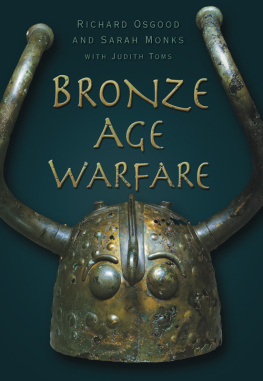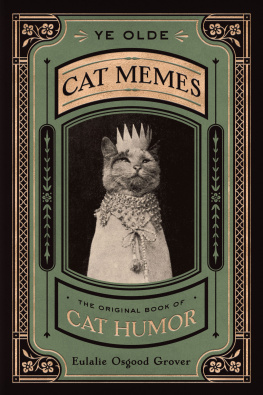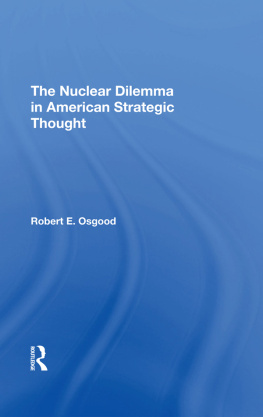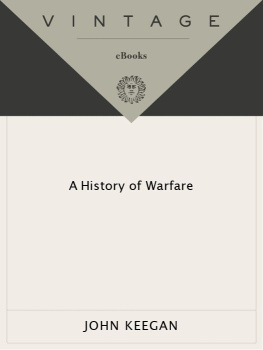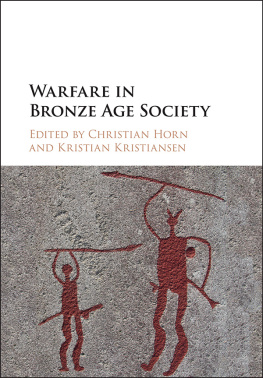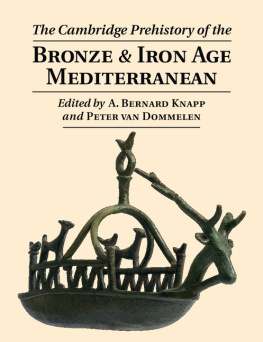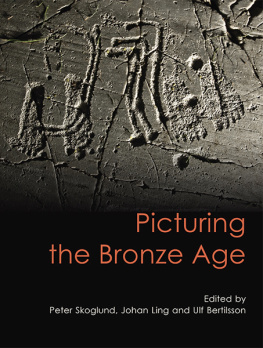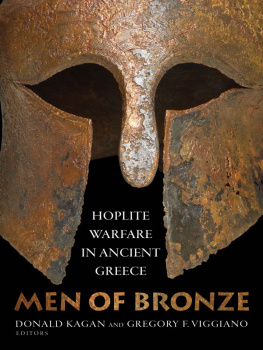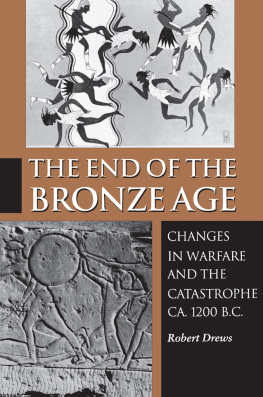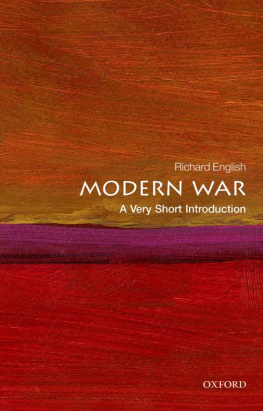Richard Osgood - Bronze Age Warfare
Here you can read online Richard Osgood - Bronze Age Warfare full text of the book (entire story) in english for free. Download pdf and epub, get meaning, cover and reviews about this ebook. year: 2011, publisher: The History Press, genre: Science fiction. Description of the work, (preface) as well as reviews are available. Best literature library LitArk.com created for fans of good reading and offers a wide selection of genres:
Romance novel
Science fiction
Adventure
Detective
Science
History
Home and family
Prose
Art
Politics
Computer
Non-fiction
Religion
Business
Children
Humor
Choose a favorite category and find really read worthwhile books. Enjoy immersion in the world of imagination, feel the emotions of the characters or learn something new for yourself, make an fascinating discovery.
- Book:Bronze Age Warfare
- Author:
- Publisher:The History Press
- Genre:
- Year:2011
- Rating:5 / 5
- Favourites:Add to favourites
- Your mark:
- 100
- 1
- 2
- 3
- 4
- 5
Bronze Age Warfare: summary, description and annotation
We offer to read an annotation, description, summary or preface (depends on what the author of the book "Bronze Age Warfare" wrote himself). If you haven't found the necessary information about the book — write in the comments, we will try to find it.
Bronze Age Warfare — read online for free the complete book (whole text) full work
Below is the text of the book, divided by pages. System saving the place of the last page read, allows you to conveniently read the book "Bronze Age Warfare" online for free, without having to search again every time where you left off. Put a bookmark, and you can go to the page where you finished reading at any time.
Font size:
Interval:
Bookmark:

Sarah Monks & Richard Osgood
Defining Warfare Terminology
Richard Osgood
Introduction
Settlements and Fortifications
Burials and Palaeopathology
Weaponry and Armour
Iconography
Conclusions
Sarah Monks
Introduction
Settlement Patterns and Fortifications
Burial and Skeletal Evidence
Weapons and Warrior Accoutrements
Iconography
Conclusions
Richard Osgood
Introduction
Settlements and Fortifications
Burials and Palaeopathology
Weaponry
Defensive Equipment
Iconography
Conclusions
Judith Toms
Introduction
Chronological Note
Settlements and Fortifications
Weapons and Armour
Defensive Equipment
Burials and Palaeopathology
Iconography
Conclusions
Sarah Monks
Introduction
The Neolithic Aegean
The Bronze Age
Settlements and Fortifications
Burial Evidence
Palaeopathology
Weaponry
Shields
Helmets
Corselets and Greaves
Iconography
Warfare at Sea
Linear B Archives
Conclusions
The End of the Bronze Age
Sarah Monks & Richard Osgood
Warfare at the Start of the Bronze Age
Summary
Warfare in the Middle and Late Bronze Age
Defensive Equipment
Iconography
Mobility
Causes of Conflict
Summary
The original idea for this book was conceived by Richard Osgood following the completion of his thesis in 1996, subsequently published as Warfare in the Late Bronze Age of North Europe. He is responsible for writing Chapters Two and Four on north-western and central Europe respectively. He is currently involved in a number of field projects in northern Europe, including excavations of the Bronze Age linear ditch and human burials at Tormarton in south Gloucestershire.
The contributions of Sarah Monks and Judith Toms, who both have significant research interests in the Bronze Age, gave the project a more pan-European approach and allowed a broader range of evidence to be studied and evaluated.
Sarah Monks, who has co-written the book and is responsible for writing Chapters Three and Six, has been carrying out research on warfare in the West Mediterranean, and specifically Spain, for the past five years. Her thesis The role of conflict and competition in the development of prehistoric West Mediterranean societies from the late 4th to early 2nd millennium BC was completed in 1998. Her research interests have focused largely on Copper and Bronze Age societies in many different parts of the Mediterranean, though specifically within Iberia, Cyprus and the Aegean.
Judith Toms has written Chapter Five on the Italian Bronze Age, and has given advice on the book as a whole. Her main area of research is the proto-history of Italy, and she has studied in particular Villanovan cemeteries and the symbolic nature of material culture in Villanovan and early Etruscan contexts.
The authors are grateful to the following people and organisations for their help and advice in bringing this book to fruition. Richard Osgood would like to thank Professors Richard Bradley, Anthony Harding, Barry Cunliffe and John Evans; Simon Pressey, Alison Wilkins and Kenton White for a number of the illustrations; Ian Cartwright for several of the photographs and Dr Mike Parker-Pearson who originally suggested that he should take a further look at Tormarton. Sarah Monks would like to thank Professors Richard Bradley and Robert Chapman; Dr Sturt Manning; David Mason (for some great photos); Simon Pressey (for the reconstruction drawing); Eva Baboula and Gerry Cox. Judith Toms would like to thank Doctors A. Sherratt, S. Sherratt, J. Robb, E. Macnamara, S. Swaddling and L. Vagnetti. Illustrations not otherwise credited are the work of the authors.
In addition, we wish to thank all the museums, institutions and individuals that granted us permission to use many of the photographs in this book. Finally, our thanks go to Rupert Harding and Sarah Cook of Suttons for their patience and perseverance.
There has been a recent rise in the popularity of archaeological studies of warfare, although most of these have focused on a particular regional area or on specific case studies. Much of this work has been undertaken on the Roman or medieval periods where we have good documentary evidence to aid the interpretation of warfare, warriors and weapons. Prehistoric warfare has generally been treated with greater caution and many believe the evidence is too unreliable, uneven and open to many different interpretations. There has also been a tendency, when referring to the prehistoric period, to use ethnographic analogies to fill in the gaps where evidence is patchy or difficult to interpret. Although the use of ethnographic case studies makes an important contribution to the study of archaeology, this present study tries to avoid the use of cross-cultural analogies between the prehistoric data and information on warfare from more recent societies.
A few recent publications have been significant in raising the profile of prehistoric warfare, including Ancient Warfare (John Carman & Anthony Harding, eds), Material Harm (John Carman, ed.), War before Civilization (Lawrence Keeley), Warfare in the Late Bronze Age of North Europe (Richard Osgood) and Troubled Times: Violence and Warfare in the Past (Debra Martin & David Frayer, eds). In addition, there have been a number of articles in journals, although these typically focus on particular regional areas or specific cultural groups, or on types of analysis, for example, use-wear studies on weapons, skeletal studies or interpretations of rock art.
So where does this book fit in? It is intended to provide a general approach to warfare in Europe, addressing many of the key issues within warfare studies on a broad scale. The various chapters are specific to particular regions, and are written by people with a keen research interest in those areas, and within each chapter a multi-disciplinary approach is adopted, discussing a range of different types of evidence to produce a more rounded picture of the nature and frequency of combat, the weapons and armour employed, and the role of warfare in society, seen through burials and artistic traditions. The aim is not to provide a complete review of all the evidence, interpretations and theories on the data, because each region would then require a book of its own, but rather to identify general patterns and trends in the evidence for warfare and cite specific examples where appropriate. Of course, the period defined (and dated) as the Bronze Age differs from region to region, a matter that is raised and discussed in each chapter. None the less, a cogent argument as to the essence of conflict in the Bronze Age of Europe can be produced.
Each chapter begins with a brief look at the preceding Copper Age or Neolithic period as a way of introducing the evidence for the Bronze Age. This is followed by a study of the various strands of evidence for warfare: settlement patterns, fortifications, burial and skeletal evidence, weapons and body protection, art and iconography. In terms of settlement patterns and fortifications, we consider what types of site were being occupied and the evidence for natural and artificial defences, and look at how the fortified, hilltop and non-fortified sites relate to one another in terms of their location, inter-visibility, function and so on. We cite examples of fortified sites, describing the nature of their defences and their development through time, including phases of destruction, repair and elaboration. The question of whether the defences were purely functional, or whether they served other social or symbolic purposes, is assessed.
Next pageFont size:
Interval:
Bookmark:
Similar books «Bronze Age Warfare»
Look at similar books to Bronze Age Warfare. We have selected literature similar in name and meaning in the hope of providing readers with more options to find new, interesting, not yet read works.
Discussion, reviews of the book Bronze Age Warfare and just readers' own opinions. Leave your comments, write what you think about the work, its meaning or the main characters. Specify what exactly you liked and what you didn't like, and why you think so.

